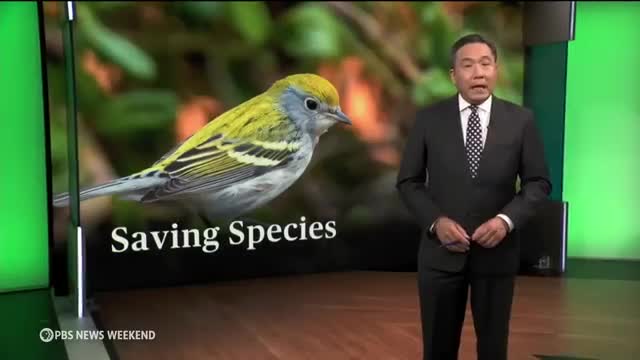Birds in peril as glass collisions claim millions annually

This article was created by AI summarizing key points discussed. AI makes mistakes, so for full details and context, please refer to the video of the full meeting. Please report any errors so we can fix them. Report an error »

Every year, an estimated one billion birds die during migration in the United States, primarily due to collisions with glass windows. This alarming statistic highlights a significant yet often overlooked threat to avian populations, particularly in urban areas like Philadelphia, which lies along the Atlantic Flyway—a major migratory route.
Steven Maciejewski, a dedicated volunteer with Bird Safe Philly, patrols the city during migration seasons, collecting birds that have fallen victim to window strikes. His efforts reveal the harsh reality that many birds do not recognize glass as a barrier; they are drawn to reflections and artificial lights, leading to fatal encounters. Maciejewski's routine involves logging the species of the birds he finds, some of which are injured or stunned, while others are dead.
The decline of bird species in North America has reached 30% since 1970, with glass windows identified as the third largest threat to these populations. Robin Irizarry from Audubon Mid Atlantic emphasizes the passive nature of this threat, contrasting it with more visible issues like habitat destruction. The problem is exacerbated by the bright lights of Philadelphia's skyline, which attract birds during their nocturnal migrations.
A catastrophic event on October 2, 2020, saw approximately 1,500 birds killed in a single night due to collisions with buildings. This prompted local advocates, including Mary Anne Scott, to push for initiatives like the \"Lights Out Philly\" program, which encourages building owners to turn off non-essential lights during migration seasons. Scott notes that most fatal collisions occur with buildings four stories or shorter, challenging the misconception that only high-rises pose a danger.
Efforts to mitigate bird strikes are gaining traction, with some cities implementing laws requiring bird-safe design practices. In Philadelphia, around 60 buildings have already committed to reducing light pollution during critical migration periods. Educational initiatives are also underway, with students and community members actively monitoring and reporting bird strikes.
Innovative solutions, such as etching patterns on glass and installing protective blinds, are being explored to create safer environments for birds. As urban planners and conservationists work together, the hope is to foster coexistence between human architecture and wildlife, ensuring that the built environment does not become a death trap for migratory birds.
Maciejewski's recent patrol resulted in the collection of 13 dead and injured birds, underscoring the urgent need for continued awareness and action to protect these vulnerable species.
Steven Maciejewski, a dedicated volunteer with Bird Safe Philly, patrols the city during migration seasons, collecting birds that have fallen victim to window strikes. His efforts reveal the harsh reality that many birds do not recognize glass as a barrier; they are drawn to reflections and artificial lights, leading to fatal encounters. Maciejewski's routine involves logging the species of the birds he finds, some of which are injured or stunned, while others are dead.
The decline of bird species in North America has reached 30% since 1970, with glass windows identified as the third largest threat to these populations. Robin Irizarry from Audubon Mid Atlantic emphasizes the passive nature of this threat, contrasting it with more visible issues like habitat destruction. The problem is exacerbated by the bright lights of Philadelphia's skyline, which attract birds during their nocturnal migrations.
A catastrophic event on October 2, 2020, saw approximately 1,500 birds killed in a single night due to collisions with buildings. This prompted local advocates, including Mary Anne Scott, to push for initiatives like the \"Lights Out Philly\" program, which encourages building owners to turn off non-essential lights during migration seasons. Scott notes that most fatal collisions occur with buildings four stories or shorter, challenging the misconception that only high-rises pose a danger.
Efforts to mitigate bird strikes are gaining traction, with some cities implementing laws requiring bird-safe design practices. In Philadelphia, around 60 buildings have already committed to reducing light pollution during critical migration periods. Educational initiatives are also underway, with students and community members actively monitoring and reporting bird strikes.
Innovative solutions, such as etching patterns on glass and installing protective blinds, are being explored to create safer environments for birds. As urban planners and conservationists work together, the hope is to foster coexistence between human architecture and wildlife, ensuring that the built environment does not become a death trap for migratory birds.
Maciejewski's recent patrol resulted in the collection of 13 dead and injured birds, underscoring the urgent need for continued awareness and action to protect these vulnerable species.
View full meeting
This article is based on a recent meeting—watch the full video and explore the complete transcript for deeper insights into the discussion.
View full meeting